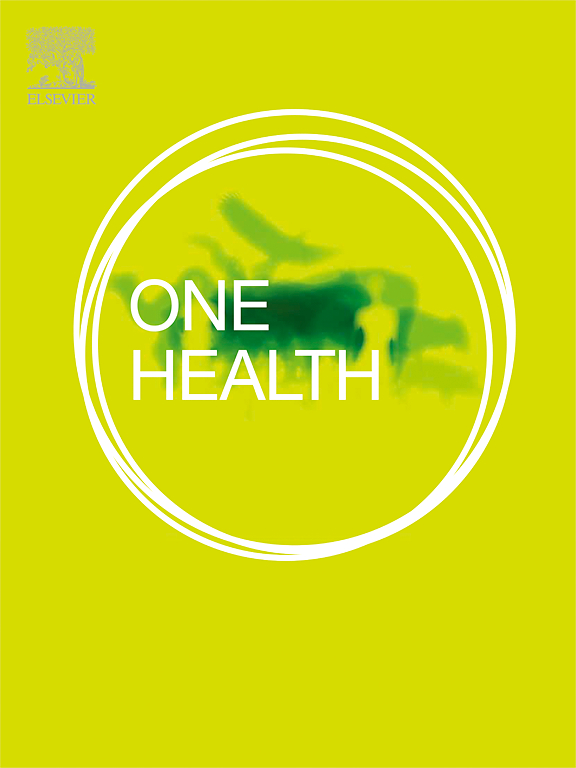Accessibility of veterinary health information and its association with the uptake of veterinary drug residue contaminated products among farmers in Bugesera District, Rwanda
IF 4.5
2区 医学
Q1 INFECTIOUS DISEASES
引用次数: 0
Abstract
Veterinary drug residue contaminated products result from extensive use of veterinary drugs in farm animals and poor adherence to the drug withdrawal period. The uptake of veterinary drug residue contaminated products poses human health risks, including antimicrobial resistance, cancer, and birth defects, among others. This study aims to determine the accessibility of veterinary health information and the relationship of this information with livestock farmers' knowledge, attitude and practices (KAP) regarding the uptake of veterinary drug residue contaminated products in Bugesera District. A mixed-methods, cross-sectional study was conducted among 236 farmers supplying meat and milk in Bugesera District. Data were collected through surveys, interviews, and Focus Group Discussions. Descriptive statistics, including frequencies and percentages, were used to summarize the quantitative data. Fisher's exact test and crosstabulations were employed for inferential analysis. A 95 % confidence interval was applied, and statistical significance was considered at a p value ≤0.05. The strength of association was measured using the odds ratio (OR). Qualitative Data were analyzed using content analysis. The results showed that 65.68 % of respondents accessed veterinary health information on the uptake of veterinary drug residue contaminated products through training on meat and milk safety and 88.56 %, and 11.44 % through veterinary service delivery from private public partnerships. Inferential analysis showed that access to veterinary health information was strongly associated with the non-uptake of veterinary drug residue contaminated milk where trained respondents were 65 % less likely to deliver veterinary drug residue contaminated milk to Milk Collection Centers (MCCs), (OR = 0.35; 95 % CI = 0.18-0.68). The study found a need for more comprehensive public private partnerships in veterinary health education, as well as the implementation of other protective measures, such as improved methods of destroying condemned carcasses, to prevent and control drug residues within the One Health ecosystem.
卢旺达布格塞拉区农民获得兽医保健信息及其与兽药残留污染产品摄取的关系
兽药残留污染产品是由于在农场动物中广泛使用兽药和不遵守停药期造成的。兽药残留污染产品的摄入给人类健康带来风险,包括抗菌素耐药性、癌症和出生缺陷等。本研究旨在确定Bugesera地区兽医卫生信息的可及性,以及这些信息与畜牧农民对兽药残留污染产品摄取的知识、态度和行为(KAP)的关系。对布格塞拉区236名供应肉类和牛奶的农民进行了一项混合方法的横断面研究。通过调查、访谈和焦点小组讨论收集数据。描述性统计,包括频率和百分比,用于总结定量数据。采用Fisher精确检验和交叉稳定法进行推理分析。采用95%的置信区间,p值≤0.05认为有统计学意义。使用比值比(OR)测量关联强度。定性资料采用内容分析法进行分析。结果表明,65.68%的受访者通过肉类和牛奶安全培训获取兽药残留污染产品的兽医卫生信息,88.56%的受访者通过公私合作伙伴关系提供兽医服务。推断分析表明,获得兽医卫生信息与不摄入兽药残留污染的牛奶密切相关,其中接受过培训的受访者将兽药残留污染的牛奶送到牛奶收集中心的可能性降低了65% (OR = 0.35; 95% CI = 0.18-0.68)。该研究发现,需要在兽医健康教育方面建立更全面的公私伙伴关系,并实施其他保护措施,例如改进销毁已定罪动物尸体的方法,以预防和控制“同一个健康”生态系统中的药物残留。
本文章由计算机程序翻译,如有差异,请以英文原文为准。
求助全文
约1分钟内获得全文
求助全文
来源期刊

One Health
Medicine-Infectious Diseases
CiteScore
8.10
自引率
4.00%
发文量
95
审稿时长
18 weeks
期刊介绍:
One Health - a Gold Open Access journal.
The mission of One Health is to provide a platform for rapid communication of high quality scientific knowledge on inter- and intra-species pathogen transmission, bringing together leading experts in virology, bacteriology, parasitology, mycology, vectors and vector-borne diseases, tropical health, veterinary sciences, pathology, immunology, food safety, mathematical modelling, epidemiology, public health research and emergency preparedness. As a Gold Open Access journal, a fee is payable on acceptance of the paper. Please see the Guide for Authors for more information.
Submissions to the following categories are welcome:
Virology,
Bacteriology,
Parasitology,
Mycology,
Vectors and vector-borne diseases,
Co-infections and co-morbidities,
Disease spatial surveillance,
Modelling,
Tropical Health,
Discovery,
Ecosystem Health,
Public Health.
 求助内容:
求助内容: 应助结果提醒方式:
应助结果提醒方式:


